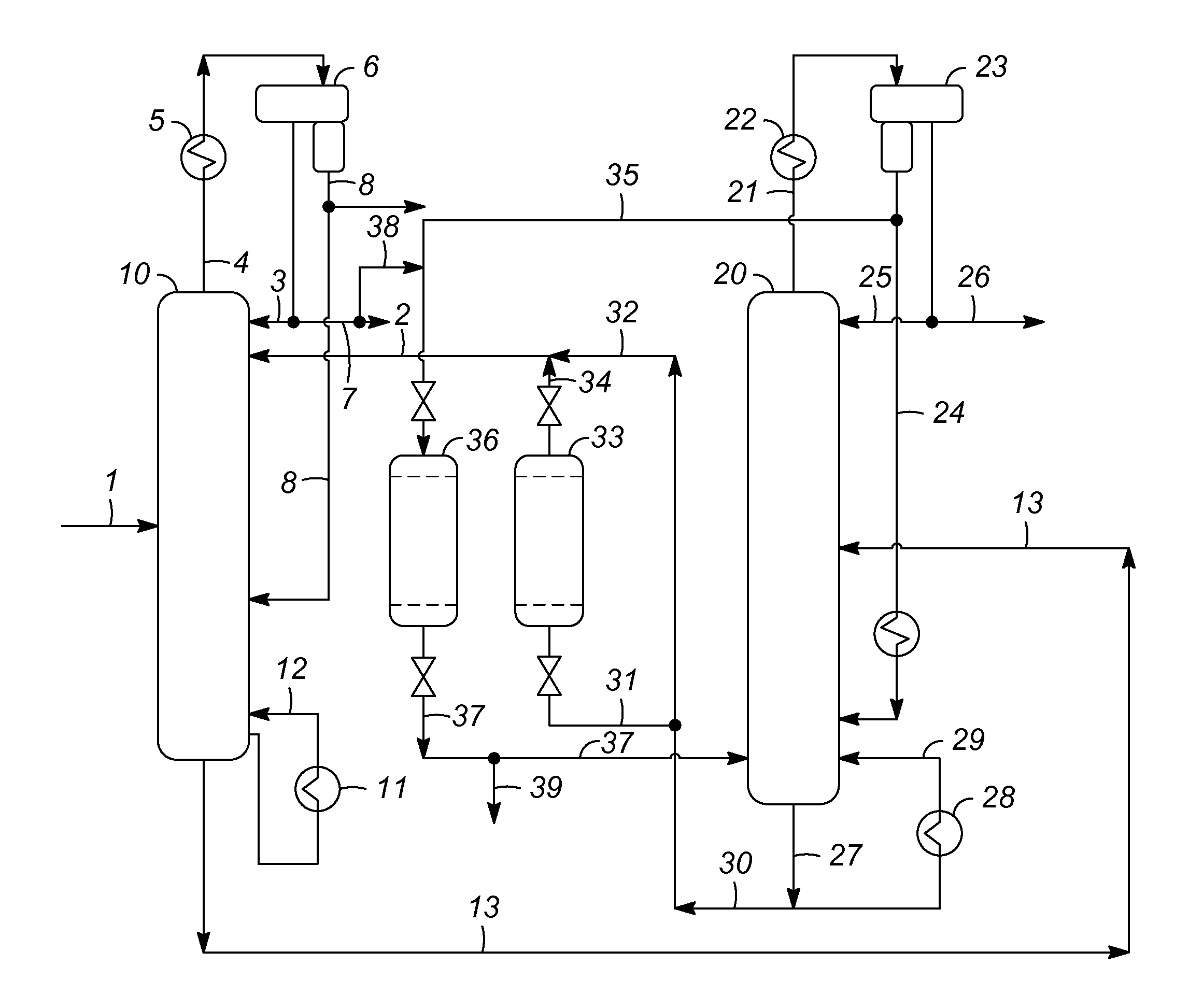Aromatics recovery by extractive distillation
a technology of extractive distillation and aromatic hydrocarbons, which is applied in the field of aromatic hydrocarbon recovery, can solve the problems of inefficient column and process operation, limited application of this process, and degradation of solvents
- Summary
- Abstract
- Description
- Claims
- Application Information
AI Technical Summary
Benefits of technology
Problems solved by technology
Method used
Image
Examples
Embodiment Construction
[0012]This invention provides an improved extractive-distillation process for recovering polar hydrocarbons from non-polar hydrocarbons, such as aromatics from non-aromatics, naphthenes from paraffins and isoparaffins, or olefins from paraffins and isoparaffins, in feed mixtures containing at least a measurable amount of heavier hydrocarbons which are extracted from petroleum streams. In one of its specific applications, this invention relates to an improved extractive-distillation process for recovering aromatic hydrocarbons including benzene, toluene, and xylenes (BTX aromatics) from the C6-C8 petroleum streams containing at least a measurable amount of C9+ hydrocarbons. In another specific application, this invention relates to an improved extractive-distillation process for recovering mainly benzene and toluene from the C6-C7 petroleum streams containing at least a measurable amount of C8+ hydrocarbons.
[0013]More specifically, this invention is directed toward the regeneration, ...
PUM
| Property | Measurement | Unit |
|---|---|---|
| Polarity | aaaaa | aaaaa |
| Solubility (mass) | aaaaa | aaaaa |
Abstract
Description
Claims
Application Information
 Login to View More
Login to View More - R&D
- Intellectual Property
- Life Sciences
- Materials
- Tech Scout
- Unparalleled Data Quality
- Higher Quality Content
- 60% Fewer Hallucinations
Browse by: Latest US Patents, China's latest patents, Technical Efficacy Thesaurus, Application Domain, Technology Topic, Popular Technical Reports.
© 2025 PatSnap. All rights reserved.Legal|Privacy policy|Modern Slavery Act Transparency Statement|Sitemap|About US| Contact US: help@patsnap.com


